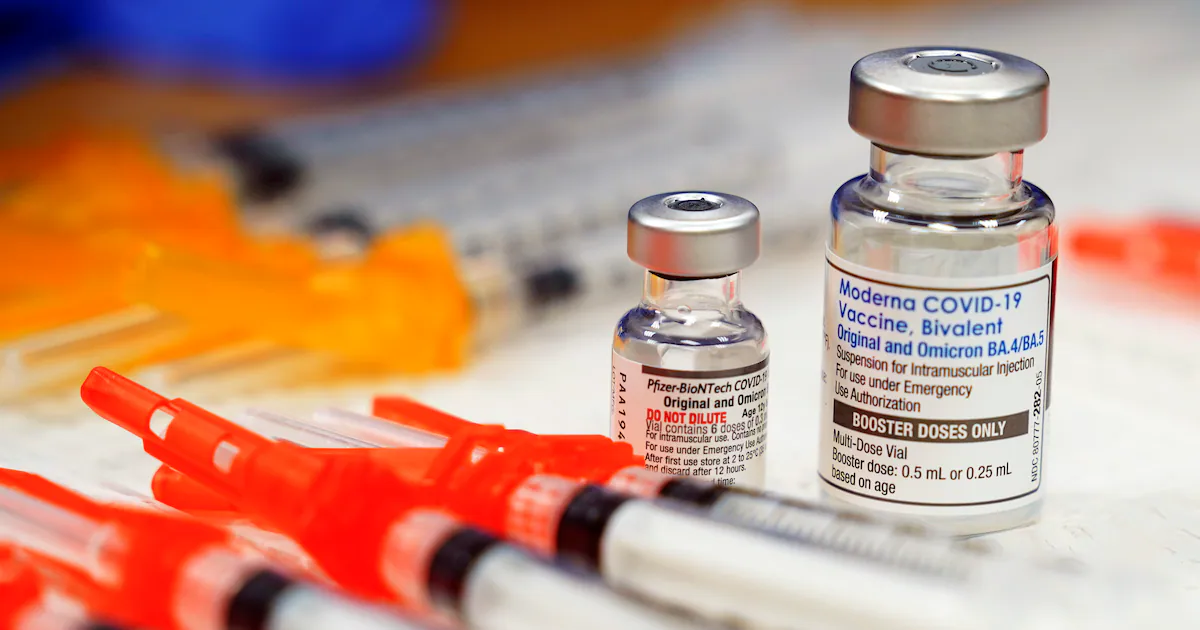
The panel that advises the Centers for Disease Control and Prevention on vaccine recommendations decided Friday to leave unchanged guidance on when or if newborns receive a hepatitis B vaccine. At least in the near term, babies will still routinely be given the vaccine within 24 hours of birth.
On Thursday, the panel did vote 8-3 with one abstention to change the guidance on the combined MMRV vaccine, which provides vaccination against measles, mumps, rubella and varicella, the technical name for chickenpox.
And on Friday, the panel is expected to decide guidelines on who should and should not receive COVID-19 vaccinations, which since their development have been recommended for everyone 6 months or older.
The membership of the Advisory Committee on Immunization Practices is new, some of the members even appointed just this week by Health and Human Services Secretary Robert F. Kennedy, who dismissed the existing panel a few months ago. There has been speculation that the committee, which includes a number of vaccine-wary members selected by Kennedy, who has spoken often of his own skepticism, would remake the vaccination landscape in America, to the delight or horror of experts and citizens, depending on their own vaccine views.
The two-day meeting taking place in Atlanta, where CDC is headquartered, is the group’s first chance to actually vote on guidance that will be given to the acting CDC director for approval, the next step before the panel’s recommendations become the official public health guidance on vaccines.
The Vaccines for Children program, which inoculates millions of U.S. children who do not otherwise have access to vaccines, relies on ACIP recommendations. Health insurers are required to cover the cost of vaccines recommended by the CDC based on the panel’s recommendations. And pharmacists in many states, including Utah, are allowed to administer recommended vaccines. The guidance influences care providers, too, as medical groups and the CDC have traditionally been in agreement.
There are very large fissures this year, after the Food and Drug Administration indicated a number of changes to its recommendations on who can and can’t have the COVID-19 vaccine, including removing healthy children and adults under the age of 65 from guidance, as Deseret News earlier reported. And the American Academy of Pediatrics has put together its own vaccine guidance in anticipation of disagreeing with federal guidance.
States, in fact, have also taken sides. Florida officials said they would eliminate all vaccine mandates, while at least two coalitions of blue states have announced plans to develop their own vaccine policy outside of federal guidance.
Meanwhile, committee Chair Martin Kulldorff said the panel is forming a pair of working groups. One will look at vaccine recommendations specifically for during pregnancy. The other will look at shot timing for the vaccine schedule.
The MMRV vote
Thursday afternoon, the ACIP panel voted 8-3 to do away with the recommendation that children under 4 can receive the combined MMRV shot. That only affects about 15% of those receiving the shot, as the vast majority receive MMR and chickenpox vaccinations separately.
Some appreciate a single shot. Others felt that the slightly elevated risk of fever-related seizures in children ages 1 to 2 should put that combination shot out of reach for young children, though not all ACIP members saw that as a significant health risk.
ACIP member Dr. Cody Meissner, a Dartmouth College pediatrician, said seizures triggered by fever are not unusual. He said all pediatricians have seen them and “we know that the prognosis is excellent.”
NPR reported that the vote was actually somewhat confusing, because the panel removed the recommendation for the combined vaccine for those under 4, but voted 11-1 to allow the combined vaccine to be covered by the Vaccines for Children program. Kulldorff cast the dissenting vote. Friday morning, the committee reversed that, voting so low-income children under age 4 will not be able to get the vaccine in that program.
Medicaid and the Children’s Health Insurance Program (CHIP) may not cover the shots, either.
But health insurers are likely to cover the vaccine if parents and doctors want it to happen. AHIP, a national trade association of health insurance providers, issued a press release Sept. 16 that said its member insurance companies “will continue to cover all ACIP-recommended immunizations that were recommended as of Sept. 1, 2025, including updated formulations of the COVID-19 and influenza vaccines, with no cost-sharing for patients through the end of 2026.”
While AHIP is the group’s name, it stands for America’s Health Insurance Plans.
That means last year’s recommendations will be covered, regardless of guidance issued by the committee this week. Since not all insurers belong to AHIP, it’s a good idea to check with your insurance. And it won’t impact what government insurance programs like Medicare, Medicaid and CHIP cover. That remains to be seen.
The hepatitis B vaccine (non)vote
The hepatitis B shot has for decades been given to all infants at birth. Critics of existing policy have said only babies whose mothers have hepatitis B need to be vaccinated, while supporters including the American Academy of Pediatrics note that not all women are screened for hepatitis B and giving the vaccine to all babies prevents chronic hepatitis and its complications for those who might otherwise fall through the cracks.
Sen. Bill Cassidy, R-La., was outspoken Wednesday on the need to continue providing the hepatitis B vaccine to newborns. “We have decreased from 20,000 kids a year getting hepatitis B to 20 kids a year. That’s exponential decline,” Cassidy, a liver specialist, told reporters after a hearing of the Senate Health, Education, Labor and Pensions committee on the termination of former CDC director Susan Monarez.



